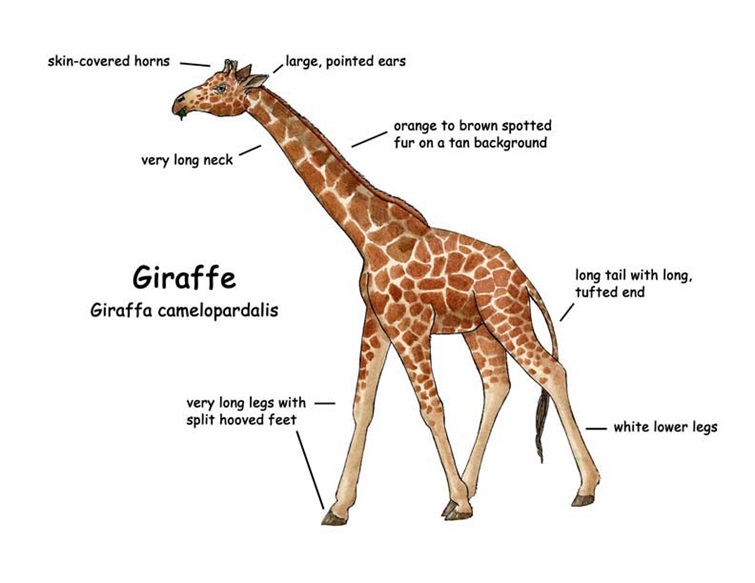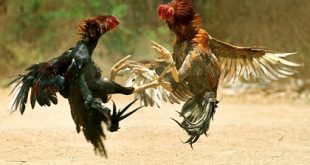The giraffe is one of the most fascinating and iconic animals in the animal kingdom. Known for its extraordinary height and unique body structure, the giraffe is a marvel of evolutionary adaptation. Every part of its body is finely tuned to its way of life, allowing it to survive and thrive in the savannas of Africa. Among the giraffe’s most distinctive features are its neck, legs, heart, tongue, and ossicones. Each of these body parts serves a unique and vital function, ensuring the giraffe’s survival in its environment.
A Body Part of A Giraffe

The Giraffe’s Neck: An Evolutionary Masterpiece
The giraffe’s long neck is perhaps its most recognizable feature, stretching up to six feet in length and weighing as much as 600 pounds. Despite its incredible length, the giraffe’s neck contains the same number of vertebrae as a human neck—seven. However, each vertebra in a giraffe’s neck is elongated, measuring up to 10 inches.
The neck’s primary function is to allow the giraffe to reach foliage high up in trees, particularly acacia trees, that other herbivores cannot access. This adaptation reduces competition for food, providing giraffes with a significant survival advantage. During the dry season, when food is scarce, the giraffe’s neck enables it to browse leaves that are out of reach for other animals.
The giraffe’s neck also plays a role in social interactions, particularly in a behavior known as “necking.” Male giraffes engage in necking to establish dominance and compete for mating opportunities. In these contests, males swing their necks and use their ossicones to strike their opponents. The strength and flexibility of the neck are crucial for these interactions.
The Legs: Built for Speed and Power
A giraffe’s legs are another remarkable feature, measuring about six feet in length and contributing significantly to its towering height. The legs are incredibly strong and allow giraffes to run at speeds of up to 35 miles per hour over short distances and maintain 10 miles per hour over longer stretches. This speed is essential for escaping predators such as lions and hyenas.
The long legs also help giraffes cover large distances in search of food and water, a critical advantage in the vast savanna. Additionally, their height gives giraffes a vantage point to spot predators from a distance, providing an early warning system that enhances their survival.
Interestingly, the giraffe’s legs play a vital role during drinking. Due to their long legs and neck, giraffes must splay their legs or kneel to reach water sources. This awkward position makes them vulnerable to predators, but their height and keen senses often compensate for this disadvantage.
The Heart: A Powerhouse of Circulation
The giraffe’s heart is an extraordinary organ, adapted to pump blood efficiently through its long neck to the brain. Weighing approximately 25 pounds and measuring about two feet in length, the giraffe’s heart generates double the blood pressure of most other mammals. This high blood pressure is necessary to overcome gravity and ensure a consistent blood supply to the brain.
To prevent damage from such high pressure, giraffes have evolved specialized blood vessels and valves. For example, their jugular veins contain one-way valves that prevent blood from flowing backward. This system ensures that the giraffe’s brain receives adequate oxygen and nutrients without risking vascular damage.
When a giraffe lowers its head to drink, the blood vessels in its neck constrict to prevent an excessive rush of blood to the brain, which could cause fainting. This intricate circulatory system highlights the giraffe’s incredible physiological adaptations.
The Tongue: A Tool for Feeding
The giraffe’s tongue is another fascinating body part, measuring up to 18-20 inches in length. It is prehensile, meaning it can grasp and manipulate objects, much like an elephant’s trunk. The tongue’s primary function is to aid in feeding, allowing giraffes to strip leaves from branches with precision.
The tongue’s dark coloration, typically black or dark blue, helps protect it from sunburn during prolonged feeding sessions under the African sun. Additionally, the tongue is coated with thick saliva, which provides protection against the thorns of acacia trees. This adaptation allows giraffes to consume thorny vegetation without injury.
Giraffes use their tongues not only to feed but also to groom themselves and their offspring. The tongue’s dexterity and strength make it an indispensable tool for their daily lives.
The Ossicones: Multifunctional Horns
Ossicones are the horn-like structures on a giraffe’s head, present in both males and females. These bony protrusions are covered with skin and hair and are a unique feature of giraffes and their closest relatives, such as okapis.
In males, ossicones play a crucial role during necking battles. They serve as weapons, allowing males to deliver powerful blows to their opponents. Over time, the ossicones of males may become bald at the tips due to frequent use in combat.
For females, ossicones may serve as a means of defense or help in thermoregulation. They also play a role in social interactions and recognition among giraffes.
The Skin: A Natural Camouflage
The giraffe’s patterned coat is not only beautiful but also serves as a form of camouflage. The irregular patches, ranging in color from light tan to dark brown, help giraffes blend into their environment by breaking up their outline among trees and bushes.
The patterns on a giraffe’s coat are unique to each individual, much like human fingerprints. This uniqueness may aid in identification and social bonding within herds. Additionally, the giraffe’s coat contains sebaceous glands that produce chemicals to repel parasites and insects, further enhancing their survival.
The Eyes: Wide and Watchful
A giraffe’s large, expressive eyes are positioned on the sides of its head, providing a wide field of vision. This adaptation allows giraffes to detect predators from various angles without needing to turn their heads. Their excellent eyesight, combined with their height, makes them one of the most vigilant animals in the savanna.
Giraffes also have long eyelashes that protect their eyes from dust and debris. These lashes, along with their ability to close their nostrils, help giraffes cope with the harsh, dusty conditions of their habitat.
Conclusion
The giraffe’s body is a testament to the power of evolutionary adaptation. Every part of its anatomy, from its neck and legs to its heart and tongue, is designed to meet the challenges of life in the African savanna. These specialized features not only set giraffes apart from other animals but also ensure their survival in a competitive and often harsh environment. By understanding the functions of these remarkable body parts, we gain deeper insight into the intricate balance of nature and the resilience of one of its most iconic creatures.


